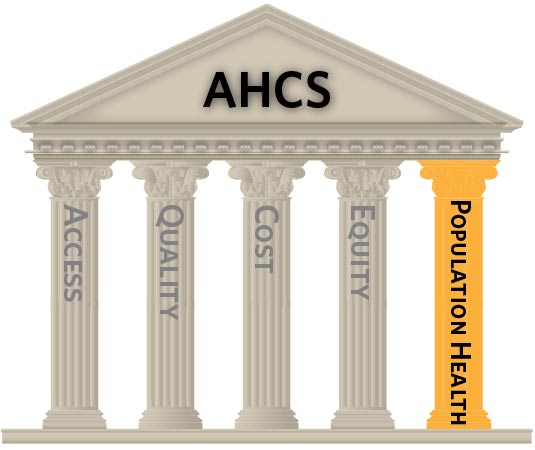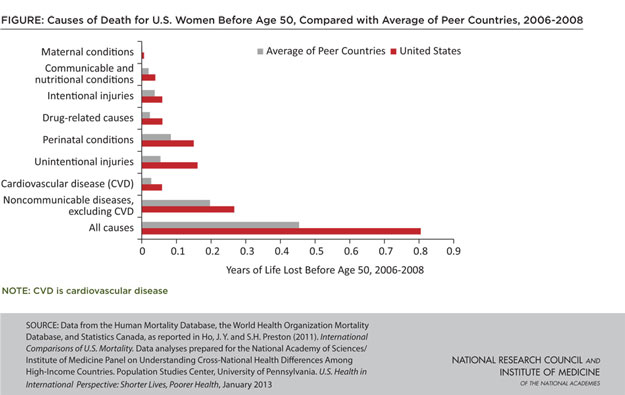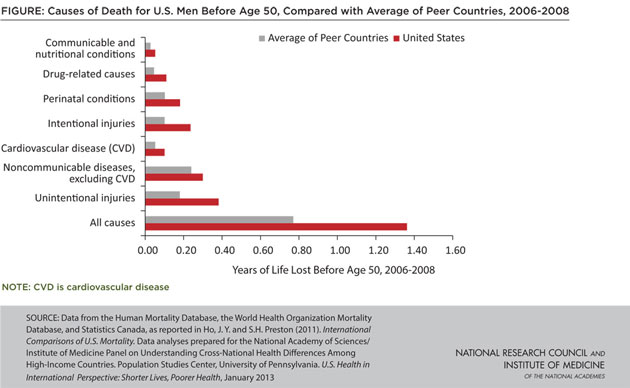Population Health

|
"The United States spends more on health care than any other nation in the world, yet it ranks poorly on nearly every measure of health status. How can this be? What explains this apparent paradox?" |
In the words of Dr. Steven Schroeder in 2007 in the assigned piece titled, We Can Do Better — Improving the Health of the American People.
The two-part answer is deceptively simple — first, the pathways to better health do not generally depend on better health care, and second, even in those instances in which health care is important, too many Americans do not receive it, receive it too late, or receive poor-quality care." N Engl J Med 2007;357:1221-8.
Fast forward to today and few things have changed. In comparison to other highly developed nations we do poorly on many measures, especially for persons under age 50 years.
- Prevalence of specific disease
- Self-rated physical and mental health
- Quality of life
- Functional status
- Life expectancy
- Age-adjusted death rates
- Infant mortality rates
- Low birth weight rates
- Cancer by stage at time of diagnosis
- Lower extremity amputations due to diabetes
- New infections with HIV
- Deaths involving alcohol or illicit substances
- Overweight and obesity
- Deaths of adolescents from guns
Consider the following two graphs that depict the causes of death of women and men in the U.S. before the age of 50, compared to peer countries.
|
|
|
|
Source: U.S. Health in International Perspective: Shorter Lives, Poorer Health |
|
The recent Institute of Medicine publication US Heath In International Perspective: Shorter Lives. Poorer Health described how Americans have worse health status and die earlier than peers in other nations. Income is known to be linked to poor health, but does not account for the differences. Persons with low income do worse, but when you compare within income groups we are still sicker and die sooner.



